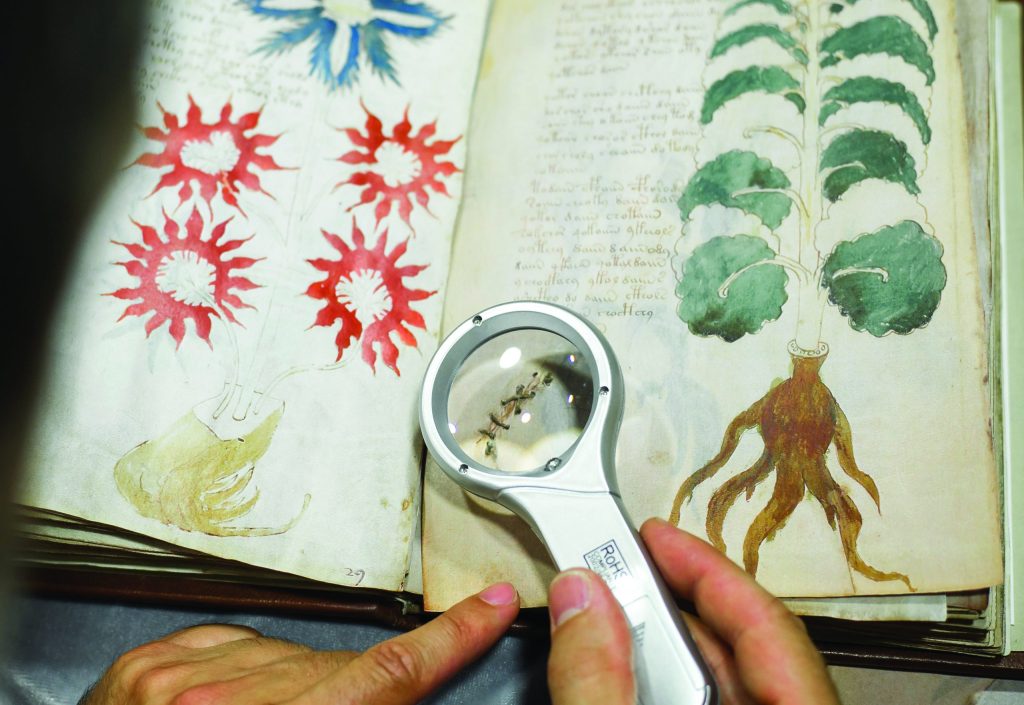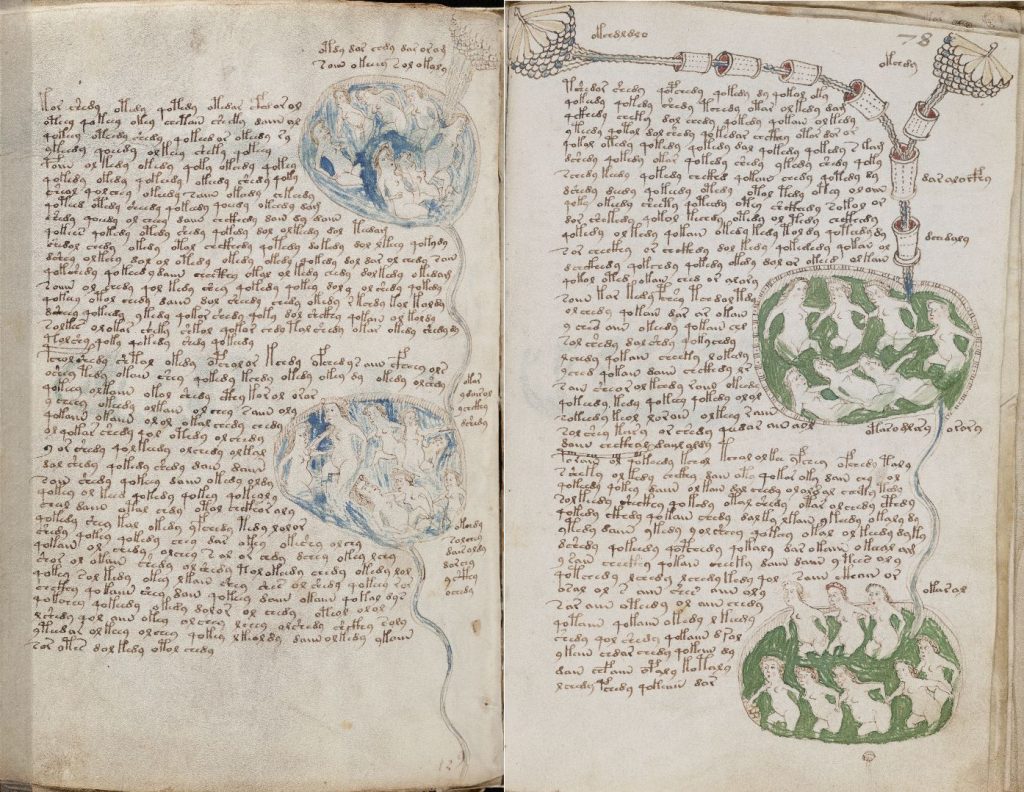The Mystery of the Voynich Manuscript: The Work of Art That Defies Reason
Among the most fascinating enigmas in the world of art and history, few have aroused as much curiosity as the Voynich Manuscript, an illustrated book that has resisted all attempts at decipherment for more than five centuries. Discovered in 1912 by the Polish bookseller Wilfrid Voynich, this manuscript volume, 240 pages on parchment, is preserved today in the Beinecke Rare Book and Manuscript Library at Yale University.
The text is written in an unknown language with an alphabet that does not resemble any known one, and accompanied by a set of enigmatic illustrations: impossible to identify plants, astronomical diagrams, female figures immersed in bathtubs or tubes, and maps that evoke constellations or biological systems. All of this has led to the manuscript being considered both a work of esoteric art and a possible lost scientific treatise.
During the 20th century, renowned cryptologists, including experts from the CIA and NSA, attempted unsuccessfully to decipher its contents. Some theorized that it could be a cipher language or an artificial language. Others maintain that it is simply an elaborate Renaissance fraud. However, recent studies using radiocarbon analysis have dated the scroll to between 1404 and 1438, confirming its authenticity as a historical object.
The style of the illustrations suggests a late Gothic and early Renaissance influence, and their execution reveals an expert hand, possibly that of an artist or scribe linked to medieval alchemy or medicine. This combination of art, science and mystery has made the Voynich a coveted piece not only by historians, but also by contemporary artists who see it as an inexhaustible source of visual inspiration.
Among the most curious theories are those that attribute its authorship to Roger Bacon, Leonardo da Vinci in his youth, or even to an anonymous monk who wanted to preserve forbidden knowledge. Other, more recent, approaches suggest that the text could follow a natural linguistic structure, which would indicate that it does indeed contain coherent information.
More than a century after its rediscovery, the Voynich Manuscript continues to be a work that transcends time, a mirror in which art, science and human mystery come together. Its visual beauty and incomprehensible language consolidate it as one of the most intriguing and artistically valuable pieces of the medieval legacy.
Article written by: Luis M. Antonetti
INSTAGRAM: https://www.instagram.com/fotolibre/




